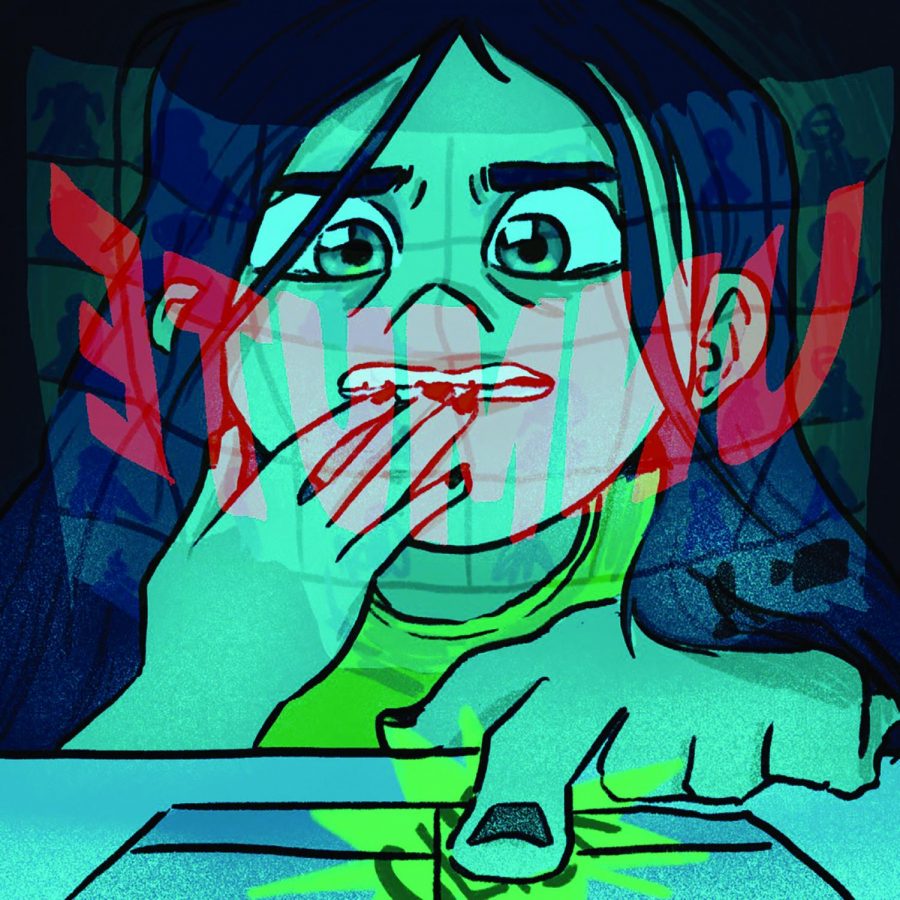Appreciate the E-Learning efforts
For the first six weeks of online learning, my eyes ached from staring at a screen for nearly 10 hours each day. I missed talking to my friends in between classes. I grew restless and fidgety from sitting in the same room for much of the day.
But despite the negatives that come with any learning system forced onto an 8-by-11.6 inch screen, things haven’t been so bad.
Back in the spring, when we first started E-Learning, some students woke up at 12:55 p.m. to sign into attendance and then immediately went back to bed. Teachers weren’t allowed to require attendance at synchronous Zoom sessions. Students completed classwork and watched pre-recorded lectures individually, and group work was scarce. By the time June came, the year simply fizzled out.
This year, things could not be more different.
Students are required to be in class with their cameras on every day. Teachers give live lectures like they normally would, allowing students to ask questions throughout the class. Breakout rooms are used for group work, with teachers popping in to facilitate conversation and clear up confusion. Students are allowed to use the school’s printers and pick up other school-provided materials to work with at home, such as equipment for science labs.
I’ve heard some of my peers be extremely critical of our current E-Learning system because they are itching to go back to school. And there were times that I, too, channeled my frustrations about E-Learning into complaints directed at the district. But our teachers and administrators have worked extremely hard this summer and school year to get to where we are now with E-Learning, and they have done well. They have created, within the circumstances that E-Learning allows, a productive system for online classes: one that closely mirrors the schedules and activities of a regular school day.
Although students may have grievances about E-Learning, it is unfair to direct these criticisms at the staff and administration. Especially as we move to a hybrid schedule, we have to realize that there are some things that just can’t be addressed under the current circumstances, while working remotely the majority of the time.
With that being said, our E-Learning system isn’t perfect. In order to continue to have a rich, engaging class environment, here are two things teachers should consider moving forward:
1. Call on random people during class.
During discussions or lectures when a teacher poses a question to the class, 30 seconds of awkward silence pass while microphones stay muted. Then, it seems the same three people volunteer to speak up every time. When speaking up on Zoom, it feels like there is more attention on you than there would be in person, so sharing a wrong answer can be that much more terrifying. In order to facilitate participation, teachers should call on students randomly. Different voices will be heard, and while there may be wrong answers, it only helps to form a more active classroom environment and allows students to contribute to discussions without first having to gather the courage to put themselves in the spotlight.
2. Give students a break during class.
Especially in lecture or discussion-based classes which require Zoom participation the entire time, giving students five or 10 minutes to themselves halfway through class makes all the difference. A quick break gives students the chance to breathe, get water or a snack, or even just fix their hair without worrying about seeming impolite or unengaged.
So, to the teachers and administrators: despite our aching eyes and fidgeting bodies, your hard work at creating functional remote and hybrid school systems is appreciated. Continue to listen to students’ suggestions, especially with more students returning to in-person learning, and continue to improve it. To the students: no system of E-Learning, even with a few days back in school, will ever be the same as full-time in-person learning. But we can either complain about not being fully back in school, or recognize that until we do, our E-Learning system is working pretty well.


